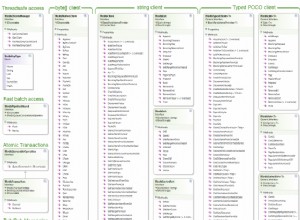Działa to w przypadku, gdy klasa POJO wygląda następująco:
public class User {
private String id;
private String firstName;
private String lastName;
// constructors (including default), get/set methods, etc.
}
A dokumenty są przechowywane w kolekcji user jak na przykład:
{ "_id" : ObjectId("604827bf8187ce707fb88681"), "firstName" : "John", "lastName" : "Doe", "_class" : "com.example.demo.User" }
Repozytorium z metodą pobierania obiektów z dostarczoną listą identyfikatorów:
public interface UserRepository extends MongoRepository<User, String> {
@Aggregation(pipeline = { " { '$match': { '_id': { '$in': ?0 } } }" } )
List<User> findByIdsIn(List<String> ids);
}
Wywołanie metody repozytorium:
List<String> inputIds = Arrays.asList("604827d13de5773133374acc", "604827617a40155f5111b9ff");
List<User> outputList = userRepository.findByIdsIn(inputIds);
outputList ma dwa dokumenty pasujące do identyfikatorów ze zmiennej inputIds .




